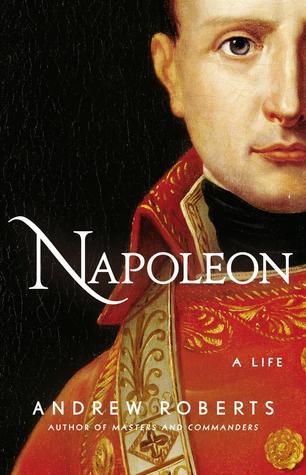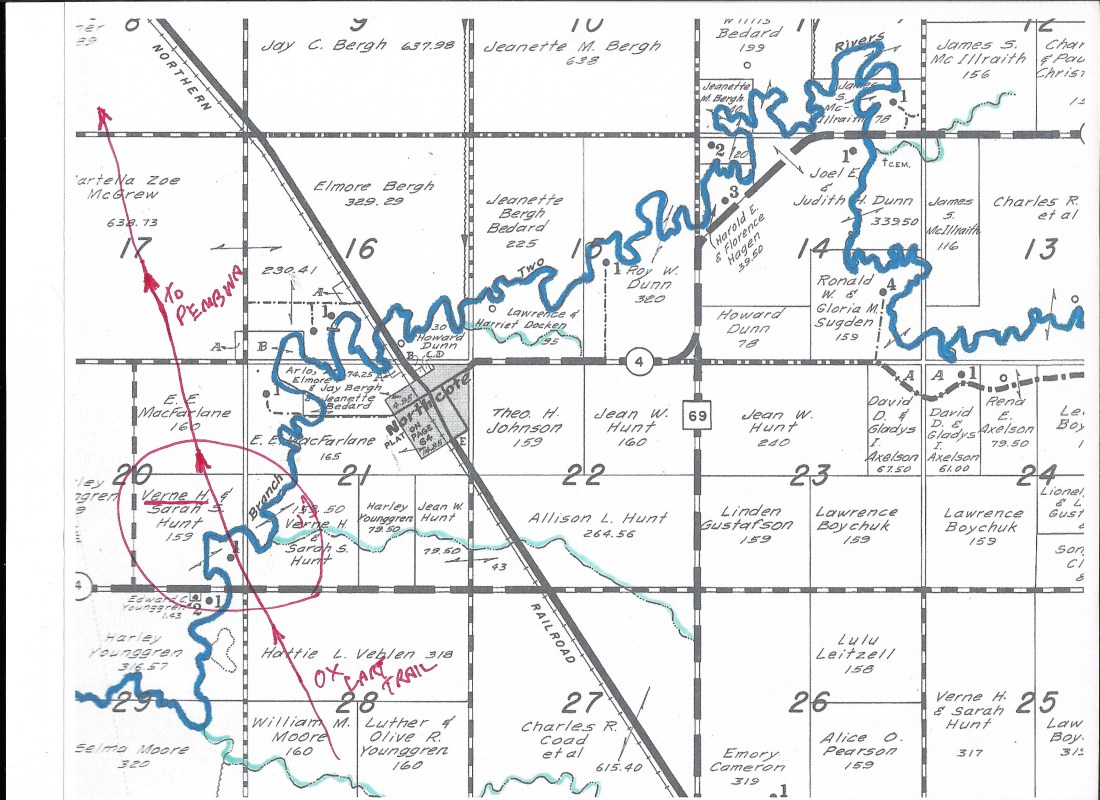 One sign of a good biography, in my experience, is that by the end of it you find yourself able to anticipate the reactions of the subject to the circumstances that face him or her. Its a sign that you have truly learned something about the personality and motivations of that person, and that the author of such a biography has done an excellent job of translating the life of someone to the written word. Much like you can predict how a dear friend will react to the news you share with them, the successful biographer creates a sense of familiarity with his or her subject that allows you to anticipate their choices.
One sign of a good biography, in my experience, is that by the end of it you find yourself able to anticipate the reactions of the subject to the circumstances that face him or her. Its a sign that you have truly learned something about the personality and motivations of that person, and that the author of such a biography has done an excellent job of translating the life of someone to the written word. Much like you can predict how a dear friend will react to the news you share with them, the successful biographer creates a sense of familiarity with his or her subject that allows you to anticipate their choices.
In reading Andrew Robert’s book Napoleon: A Life I felt that I gained that sense of familiarity with an individual whose actions and decisions would have an impact in the shaping of the modern world. This is the triumph of Robert’s biography of Napoleon Bonaparte, his ability to describe and recreate the personality of Napoleon himself, and he accomplishes this feat through a very clear dedication to exhaustively examining the source materials available to him. Pouring through numerous reports of people’s personal meetings with Napoleon, and the exhaustive amount of letters he wrote to people and dispatches he wrote from the battlefield, Roberts creates a picture of a human person whose personality is discernible and allows the reader to more greatly grasp the motivations and thinking processes of this man who had such an incredible impact on the western world.
My view of Napoleon as informed by this biography was that he was an extremely intelligent man, who had a wealth of knowledge that stretched far beyond battlefield tactics (he took a retinue of archeologists and historians with him on his campaign to Egypt, established several universities and was able to argue the finer points of the writings of Hegel, Kant and Goethe). He was also an excellent political strategist and administrator, understood the importance of creating an approachable public image, especially among his soldiers, and had a sense of humor, even about himself. In all honesty he seemed to me to be a person, 200 years of history aside, that in the right circumstances, and with the help of a translator, I might have a very good and engaging conversation with. While saying this I do acknowledge this is a man who plunged Europe into a state of near constant war for the greater part of fifteen years.
One of Roberts clear objectives in this biography is to dispel popular myths about Napoleon, myths that came from the fact that by the end of his reign very few published biographies on the European continent, and certainly none in England, were going to provide an objective evaluation of his reign as Emperor of France, (though many of his contemporaries including the Duke of Wellington, who would command the British troops during his defeat at Waterloo, would openly admit to his superior skills as a military commander). Napoleon was seen by his contemporaries as a despot, addicted to absolute power, prone to pursuing revenge because of his Corsican heritage, and as he was declared by the Holy Synod of the Russian Orthodox Church during his invasion of Russia, the Antichrist. Employing the objectivity of the trained historian, Roberts goes through the arduous task of painting a picture of Napoleon in as neutral tones as possible.
One of the positive elements of Napoleon’s career that Roberts points to was his ability to govern and his ability as a law maker. Once the Brumaire coup was successful and Napoleon was ensconced as First Consul, he worked hard at reforming the outdated and regionally varied systems of government in France, some of which were still based on the laws and customs of the Roman Empire, and creating a Napoleonic code of law which had elements that would stand into the 20th century. Some of Napoleon’s innovations of French law included a strong separation of church and state, the removal of certain hereditary rights, equal representation under the law, a certain level of religious toleration, and the ability for all adult men to own property. Overall, the Napoleonic Code would serve as a consolidation and a simplification of all the laws and statutes passed by the different revolutionary governments in France since 1789. Many would criticize the Napoleonic Code for giving too much power to the male head of the household, and curtailing women’s rights as well. Even with these criticisms for its time it was still a step forward, for the most part, in giving rights and freedoms to all.
The wealth of reforms that Napoleon would introduce into the French legal system is also a good way to highlight Napoleon’s incredible attention to even the smallest of details in his government and in his military. Throughout the book Roberts highlights the smallest of issues and topics that Napoleon would take up in letters to his administrators and generals. In the middle of major military conflicts, where the borders of entire nations were being decided, Napoleon would still find the time to write his officials about topics as miniscule as the cost of bread in Paris, or about establishing a boarding school for daughters of members of the Légion d’Honneur. Napoleon would also have a great attention to detail for the provisions and supplies of his armies, the availability of high quality shoes for his troops being an especially important point of emphasis for him. Despite this strong memory and attention to detail Napoleon would consistently lie in his military bulletins from the front, greatly exaggerating the numbers of casualties, prisoners taken and guns seized from opposing armies and greatly downplaying the number of casualties the French army took. While some of these were cleverly planned subterfuges for political or military advantages, some just seemed to be a point of pride for the Emperor.
Beginning his military career as an artillery commander, Napoleon would find inspiration in reading of the exploits of the ancient world’s greatest military leaders, from Alexander the Great to Hannibal to Julius Caesar, while also finding inspiration from more contemporary leaders like the Duke of Marlborough to become an expert military tactician himself. One of his greatest innovations in the battlefield was his employing of the corps system, developed by Guibert and Marshal de Saxe, which gave his armies a greater speed and flexibility in maneuvering than had been seen previously on the European battlefield. First employed around the time of his conflicts with the Third Coalition, and after his campaigns in Italy and Egypt which won him his initial renown as a general, each corps was composed of roughly 20,000 to 40,000 soldiers. A corps was essentially a mini army in itself, with a full compliment of infantry, cavalry, artillery, intelligence, engineering and all other necessary units. As Roberts describes it “Each corps needed to be large enough to fix an entire army into position on the battlefield, while the others could descend to reinforce and relieve it within twenty-four hours, or, more usefully, outflank or possibly even envelope the enemy.” This system played perfectly into Napoleon’s innate skill for maneuvering his armies across battlefields with an impressive speed which allowed him to surround, surprise and overwhelm his opponents. Other aspects of a successful Napoleonic army would include crossing and seizing bridges in the presence of the enemy, which happened famously at Lodi, and splitting enemy armies between a strong central French force, allowing for multiple engagements with the enemy while preserving superior numbers. Napoleon would also be a huge proponent of the clever use of infantry, artillery and cavalry to support each other on the battlefield, though by the end of the Napoleonic Wars cavalry would become somewhat obsolete, being eclipsed by artillery in its usefulness (the Battle of Wagram in 1809 would be the last time cavalry would decisively impact a battle). In addition to his legacy of law and jurisprudence in the Napoleonic Code, Napoleon would also leave a legacy of innovative and effective military tactics that would remain the epitome of battlefield tactics until the technological advances of the First World War would render them obsolete.
While I speak of Napoleon in mostly positive terms here, I do want to note that Roberts does not shy away from some of the atrocities he committed throughout his life. One event that was particularly emblematic of Napoleon’s mix of chivalry and ruthlessness was the massacre at Jaffa during his Egyptian campaign. After following Mamluk forces to the city of Jaffa, located in present day Israel, he called on the governor of the city to surrender. When the governor responded by displaying the severed head of Napoleon’s messenger on the walls of the city Napoleon ordered a breach of the city walls and the French forces quickly overran the defenses and set about pillaging Jaffa. Days after the battle Napoleon would take the enemy forces who surrendered, some of whom had previously promised to disarm and return home after being defeated in a previous battle, on a march out to the sea where they were shot by the thousands. Present day estimates put the massacre at between 2,200 and 3,500 men. Roberts notes this certainly would not have happened to European prisoners of war, pointing to a racial element in Napoleon’s order. This massacre is tempered at least a bit by the fact that when his soldiers caught the plague from Jaffa’s inhabitants he would visit the afflicted in their quarantined hospital, taking caution to the wind regarding his own health to give them confidence and encouragement in their recovery.
The incident, however, which perhaps serves as the best example of his despotic tendencies once ascending to the role of absolute ruler of France was his execution of Louis de Bourbon Condé, the Duc d’Enghien. The Duc d’Enghien was a direct descendent of King Louis XIII and a prince of the deposed French royal family. When the head of the police in Paris unearthed and prevented a plan to assassinate Napoleon, d’Enghien was implicated in the plot on severely circumstantial evidence. After consulting his advisors Napoleon decided to send a detachment of soldiers to kidnap the Duc from Ettenheim, which lied across the French border in what was then the neutral Duchy of Baden. After searching d’Enghien’s papers French soldiers found no evidence of any involvement in the assassination attempt, only finding that he was receiving payments from London used to distribute to other French royalists who fled the country, and that he had also hoped to march with the Austrians should they invade France. All told, that seems like a pretty reasonable response to being deposed and forced to leave your country in fear of your life. Napoleon called a court marshal for the Duc and after that and a short sham of a trial the Duc D’Enghien was shot for bearing arms against the country and buried in an already dug grave. This violation of another country’s sovereignty and the sham trial would have a profoundly negative impact on public perception of Napoleon across Europe. Liberals and moderates across Europe started to see Napoleon no longer as an Enlightenment inspired lawgiver, but rather a despotic Corsican with a penchant for vendettas. This would severely damage relations with Austria and Russia and lead to the military conflicts that would eventually cause Napoleon’s downfall.
Throughout the entirety of his life, even before the campaigns in Italy and Egypt that would gain him fame for his military genius, Napoleon understood himself as a person who would come to have a world historical importance, and he eventually proved himself correct in that belief. Napoleon expanded France’s borders as far as they have ever gone, dictated a legal code that has far outlasted the accomplishments of many of his contemporaries and left a legacy of military tactics that required revolutionary changes in technology to become obsolete. As evidence of this exalted self-confidence Roberts throughout the book points to instances where in his own writings Napoleon seems to be comparing his exploits to the ancient leaders like Alexander the Great and Julius Caesar who he admired as a youth. In his own time Napoleon saw himself on equal footing with these historical actors, and Roberts’ portrait of Napoleon gave me every indication that he was a uniquely exceptional individual, capable of equaling those men in their accomplishments through his natural talents and the sheer determination of his will. The true triumph of Roberts’ book is that he is able to balance the human with the mythical superhuman. Roberts gives us an extremely human and intimate portrait of a man who was almost superhuman in his talents that not only succeeds at showing us his flaws, but also what made him exceptional on the battlefield and on the throne. It is that balance of the human and the superhuman, man and myth that allows us to see Napoleon perhaps as best as we can hope to over 200 years removed from his reign.
Fun and Weird Facts from Napoleon: A Life- As I mentioned, Napoleon was highly influenced by many ancient military leaders like Hannibal and Alexander the Great. In many of his painted portraits he would be painted with his hand in his waistcoat in imitation of the manner one would stand in a Roman toga.
- As a show of his expert skill as a self promoter and propagandist Napoleon would have 141 medals commemorating his exploits made during his life. These medals would commemorate military victories, his weddings and other major events like his coronation.
- Showing adoption of the French penchant for wine, on his expedition to Egypt Napoleon would bring 800,000 pints of wine with him.
- The genius and effectiveness of the Napoleonic Code are evident in the fact that aspects of it are still employed today in places as far reaching as Japan, Egypt, Quebec and Louisiana.
- When negotiating the Louisiana Purchase the American diplomats inquired as to how far the territory extended north and west. The response from Napoleon’s side was essentially that they didn’t know and that it was whatever they bought from Spain in 1800.
- Napoleon tried to make his birthday an official church holiday called St. Napoleon Day, which understandably angered the majority of the deeply Catholic French people. To alleviate people’s anger and placate Napoleon at the same time the Vatican made up a person named Neopolis, who they said was a martyr who refused to pledge allegiance to the Roman Emperor Maximilian, to canonize on his birthday.
- Also in the category of angering religious people, Napoleon was declared to be the Antichrist from the book of Revelation by the Holy Synod of the Russian Orthodox Church during his invasion of Russia.
- Among the things seized during the kidnapping of the Duc d’Enghien was his pet dog, who would later come to be owned by King Gustav IV of Sweden. Gustav IV gave the dog a collar declaring “I belong to the unhappy Duc d’Enghien”.
- The only medical procedure performed on Napoleon during his life was a tooth removal on St. Helena in the fall of 1817.
- One book I’ve read that serves as a sort of precursor to Napoleon’s conquest of Europe is James Falkner’s The War of The Spanish Succession 1701-1714. The book covers the military exploits and strategies of many military leaders like the Duke of Marlborough and Prince Eugene of Savoy who would go on to inspire Napoleon and influence his military tactics.
- While I haven’t read it myself I’ve heard good things about one of Andrew Roberts’ other books Masters and Commanders, which covers the exploits of Franklin Roosevelt, Winston Churchill, George Marshall and Alan Brooke during World War II.
- One figure who Robert’s book left me wanting to learn more about was the Duke of Wellington. Jac Weller has written a trilogy of books that detail Wellington’s rise to prominence and his role in the Napoleonic Wars, which Roberts cites often in Napoleon: A Life.
Advertisements Share this:





